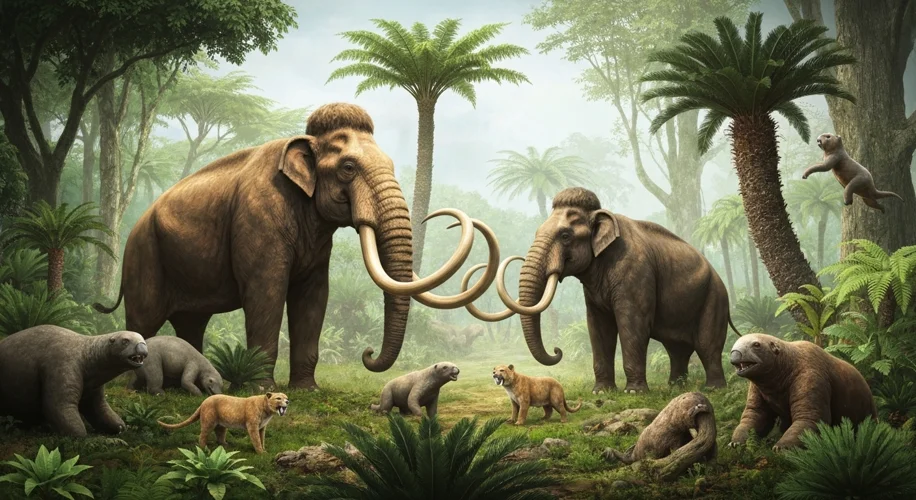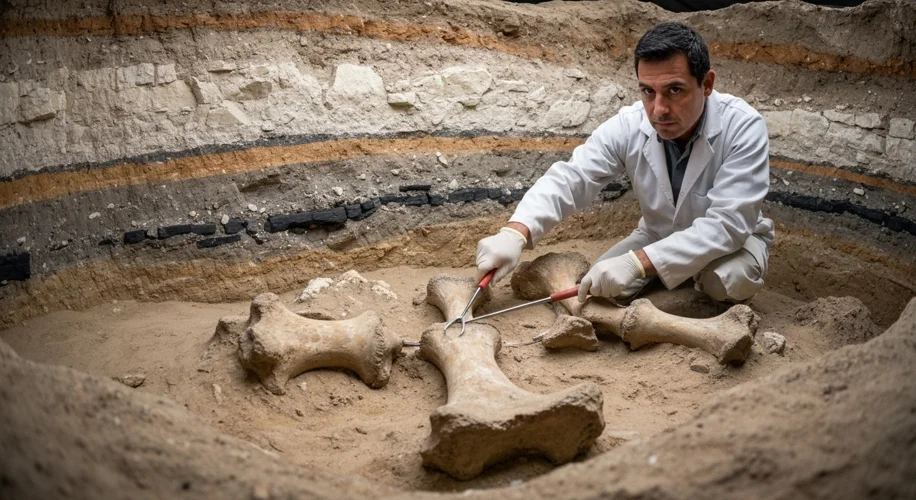The windswept plains of Mexico, vast and ancient, hold secrets buried not just in the earth, but in the very echoes of life that once roamed there. For millennia, mammoths, those colossal titans of the Ice Age, thundered across these landscapes. Today, through the marvel of paleogenetics, we can peer into their genetic past, uncovering stories that are as baffling as they are illuminating.
For years, scientists believed that the mammoths that populated North America, including Mexico, were primarily descendants of the Columbian mammoth (Mammuthus columbi). These magnificent beasts, larger and more robust than their woolly cousins to the north, are thought to have migrated south from what is now the United States. However, recent groundbreaking studies analyzing ancient DNA extracted from mammoth remains found in Mexico are beginning to rewrite this narrative, revealing genetic puzzles that have left researchers scratching their heads.

The tale begins with the incredible advancements in paleogenetics, a field that allows scientists to reconstruct the genomes of extinct species. Imagine minuscule fragments of bone, preserved for thousands of years, holding within them the complete genetic blueprint of a creature long gone. By carefully extracting and sequencing this ancient DNA (aDNA), researchers can learn about an animal’s evolutionary history, its relationship to other species, and even its migration patterns.
In Mexico, mammoths met their end in various ways. Some succumbed to the changing climate at the end of the Pleistocene epoch, while others fell prey to the early human hunters who shared their world. The resulting fossils, often found in sedimentary layers, provide invaluable windows into a lost era.
What the recent DNA studies have unearthed in Mexico is a surprising presence of steppe mammoth (Mammuthus trogontherii) ancestry, far more significant than previously anticipated. The steppe mammoth was an earlier, more widespread species that originated in Eurasia and then spread across North America. For a long time, it was believed that the Columbian mammoth had largely replaced the steppe mammoth in the southern regions of the continent. Yet, the genetic evidence suggests a more complex picture.
Scientists have found that some of the ancient Mexican mammoths possessed a genetic signature that points to a more direct lineage from the Eurasian steppe mammoth, or at least a much more substantial contribution than a simple trickle-down effect from northern populations. This raises a critical question: how did these steppe mammoth-like lineages persist or even thrive in Mexico when the Columbian mammoth was thought to be dominant?
One possibility is that the migration patterns were more intricate than we currently understand. Perhaps there were multiple waves of migration, or perhaps populations of steppe mammoths became isolated in certain regions of North America, evolving independently for a time before interacting with or being supplanted by the Columbian mammoths. The data from Mexico suggests that these southern populations might have retained a stronger genetic connection to their Eurasian ancestors.
Another layer of mystery involves the genetic diversity observed. Some specimens show a mix of both Columbian and steppe mammoth DNA, indicating interbreeding between different groups. However, the proportion of steppe mammoth ancestry in some of these Mexican individuals is unexpectedly high, prompting speculation about their origins and the dynamics of mammoth populations in this region.
Furthermore, there are anomalies within the data itself. Some genetic markers, or variations within the DNA, appear in these ancient Mexican mammoths but are either absent or extremely rare in their northern relatives, including the woolly mammoth. These unexplained genetic variations could be the result of unique adaptations to the Mexican environment, genetic drift in isolated populations, or perhaps even something entirely unexpected – a piece of the mammoth puzzle that has eluded us.

The implications of these findings are far-reaching. They challenge our understanding of mammoth evolution and dispersal across the Americas. If steppe mammoth lineages were more influential in Mexico than previously thought, it could alter our models of prehistoric ecosystems and the interactions between megafauna and early humans in the region. It also highlights the importance of localized genetic studies; a broad picture of mammoth populations in North America might mask the unique genetic histories unfolding in different geographical areas.
The ‘unexplained’ aspect is what truly ignites the imagination. These genetic anomalies could be clues to subspecies or regional populations of mammoths that we have yet to identify, or they could point to genetic processes that we don’t fully comprehend in ancient populations. It’s a thrilling reminder that even with the most advanced scientific tools, the past can still hold profound surprises.
Ultimately, the ancient DNA from Mexico’s mammoths is not just a collection of genetic sequences; it’s a testament to the dynamic and often unpredictable nature of evolution. As researchers continue to delve into these genetic mysteries, we are offered a captivating glimpse into a world ruled by giants, a world whose secrets are only now beginning to be fully unearthed, one ancient strand of DNA at a time.

